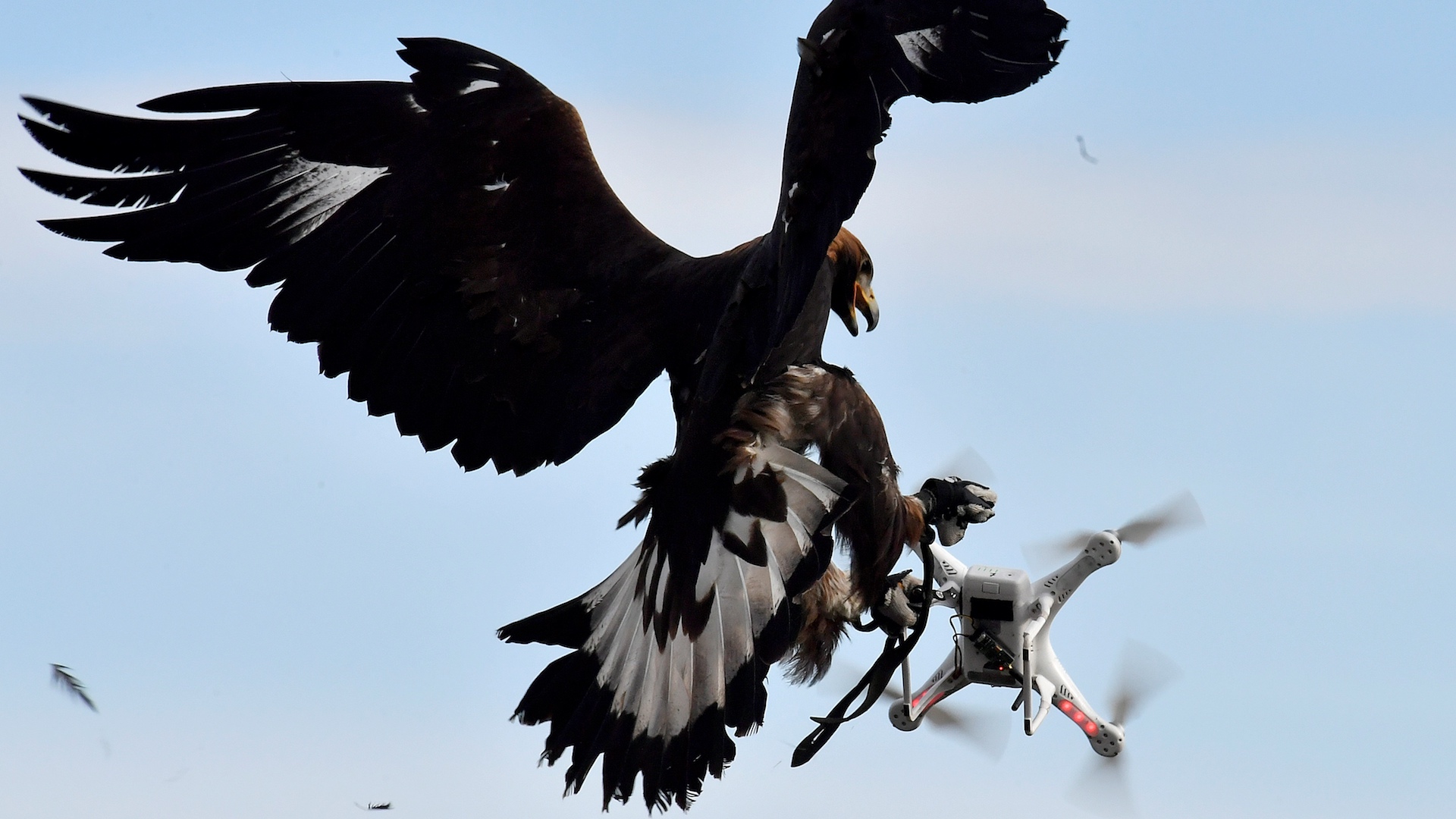

The United States Air Force has funded anti-drone research from an unexpected angle—the predatory animal behavior of a falcon when targeting its prey. We’ve seen biomimetic drone designs before, such as the SMAD which can perch on walls, or the bionic drone capable of fitting in amongst actual birds, but the approach here isn’t focused on mimicking birds and appearing like them, rather it uses them as inspiration for aerial anti-drone technology.
According to Bloomberg, the Air Force funded a zoology study by researchers at Oxford University, which found that a falcon’s tracking of prey could be useful when developing anti-drone tech in order to defend against potentially threatening unmanned aerial vehicles. This would ideally be implemented to protect troops, law enforcement, or “critical infrastructure” such as airports.
Reportedly, the research involved fitting falcons with video cameras and GPS receivers, in order to track their precise flight maneuvers and methodology when attacking their prey. The study even had researchers attach bait to a drone to lure a falcon after the UAV and simultaneous track its movement. According to Oxford University’s research paper published Monday, one particularly interesting conclusion was that “peregrine falcons steer their attacks using the same control strategies as guided missiles.” Naturally, this is of paramount interest to defense institutions such as the Air Force.
“We think that the finer details of how peregrines operate could certainly find application in small drones designed to remove other drones from protected airspace,” said Professor Graham Taylor, whose research was comprised of 55 attack flights with falcons and drones. The research being done here will most probably not lead to large fleets of drone-destroying falcons perched atop airports and near battlefields, rather to a more refined understanding of how to program anti-drone technology for maximum efficiency in flight and targeting.
As drones become more affordable, and increasingly threaten the integrity of purposefully guarded areas such as airports and prisons, officials responsible for the security of said institutions are becoming more and more concerned with how best to approach this modern problem of unwelcome aerial visitors. Sure, there are anti-drone guns as well as the ability to geofence an area, but as the drone industry grows, so does anti-drone research and funding. Looking towards avian predatory behavior is not only logical but readily available for testing, making this falcon-based anti-drone development fairly rational.